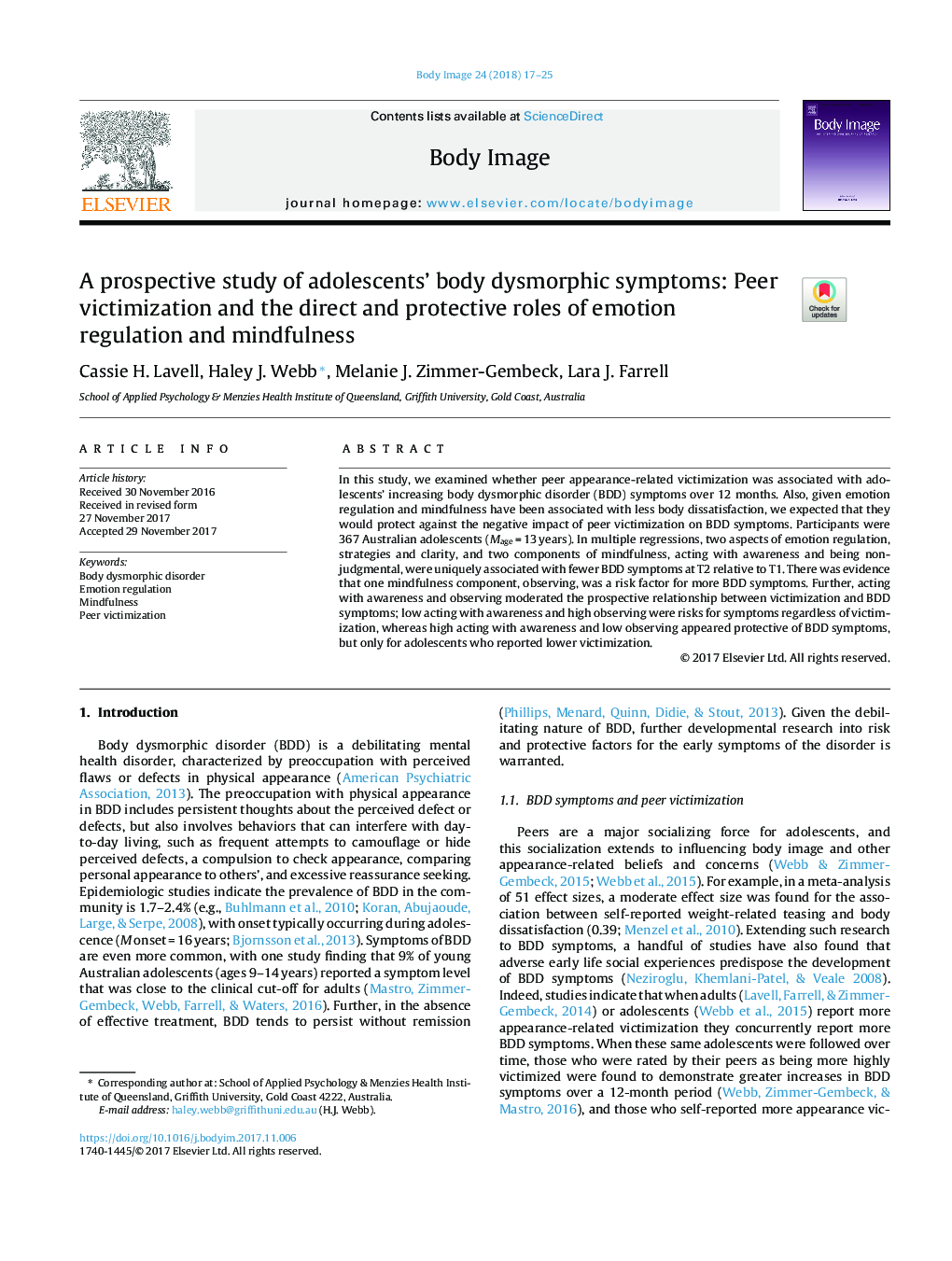| Article ID | Journal | Published Year | Pages | File Type |
|---|---|---|---|---|
| 7263078 | Body Image | 2018 | 9 Pages |
Abstract
In this study, we examined whether peer appearance-related victimization was associated with adolescents' increasing body dysmorphic disorder (BDD) symptoms over 12 months. Also, given emotion regulation and mindfulness have been associated with less body dissatisfaction, we expected that they would protect against the negative impact of peer victimization on BDD symptoms. Participants were 367 Australian adolescents (Mage = 13 years). In multiple regressions, two aspects of emotion regulation, strategies and clarity, and two components of mindfulness, acting with awareness and being non-judgmental, were uniquely associated with fewer BDD symptoms at T2 relative to T1. There was evidence that one mindfulness component, observing, was a risk factor for more BDD symptoms. Further, acting with awareness and observing moderated the prospective relationship between victimization and BDD symptoms; low acting with awareness and high observing were risks for symptoms regardless of victimization, whereas high acting with awareness and low observing appeared protective of BDD symptoms, but only for adolescents who reported lower victimization.
Related Topics
Health Sciences
Medicine and Dentistry
Psychiatry and Mental Health
Authors
Cassie H. Lavell, Haley J. Webb, Melanie J. Zimmer-Gembeck, Lara J. Farrell,
